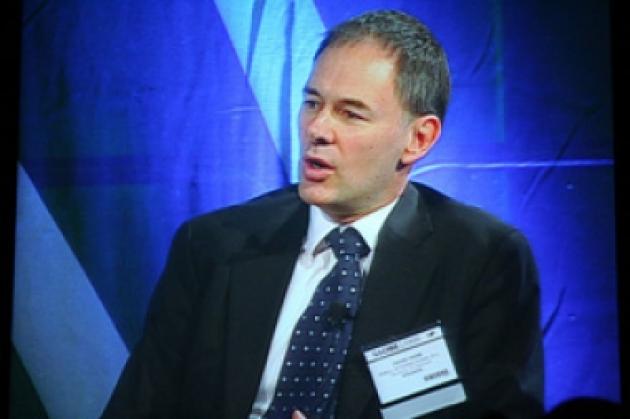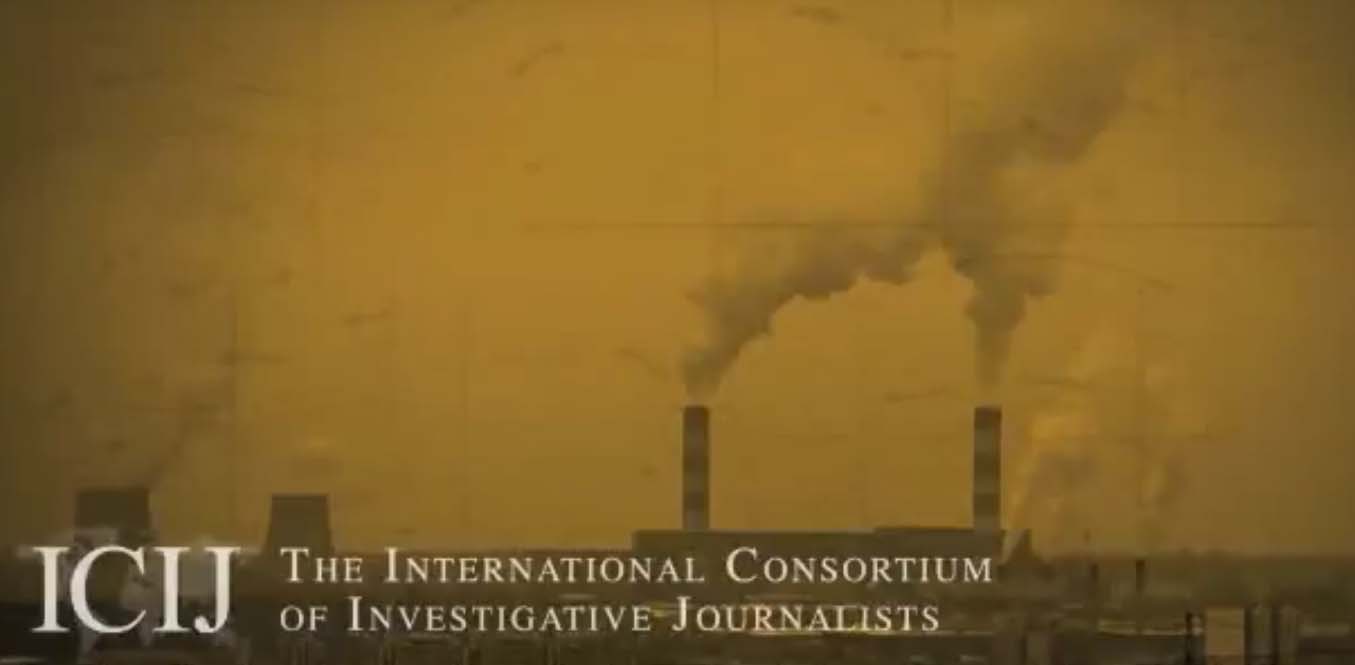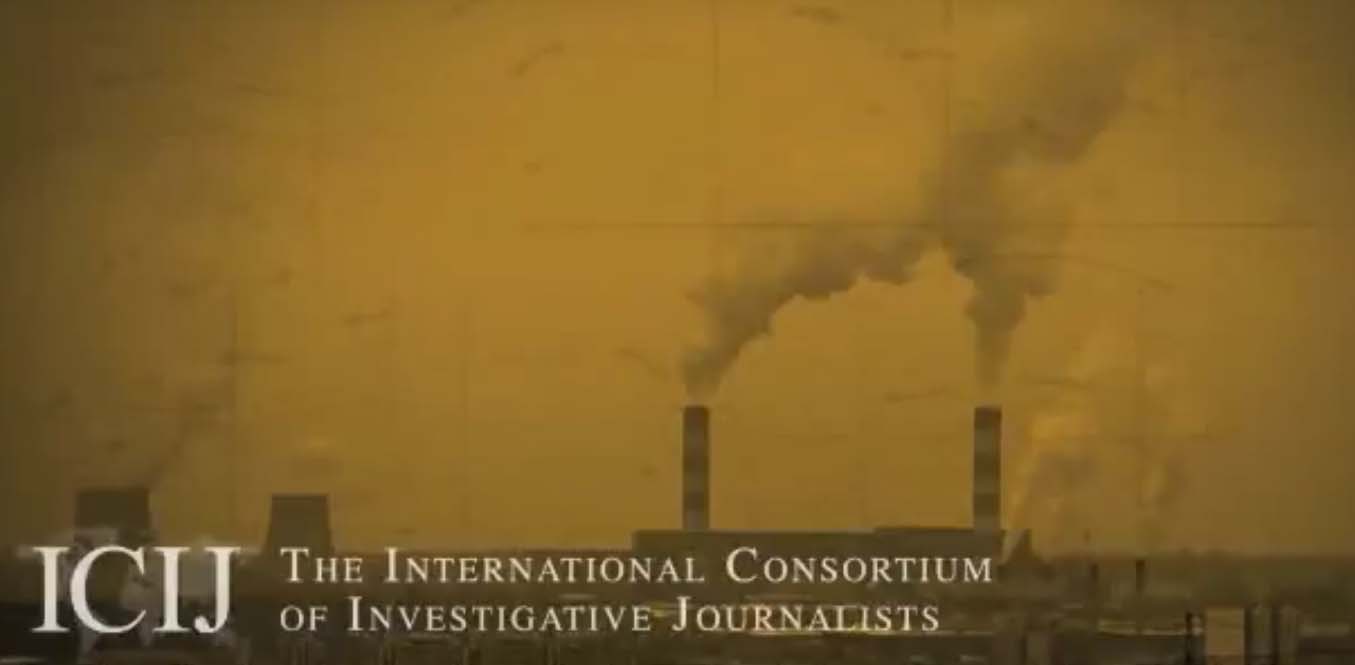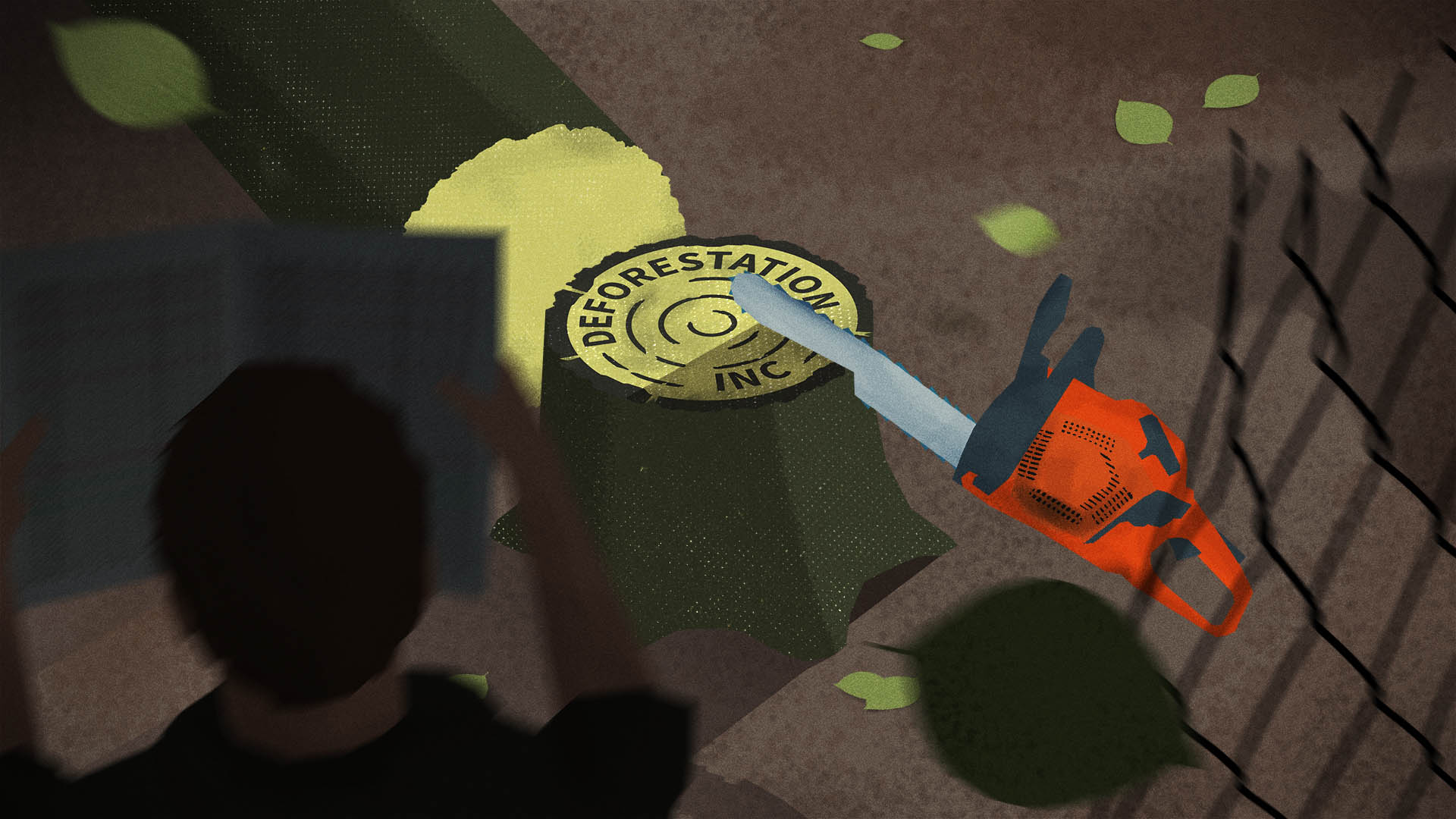
Copenhagen — Capturing and storing carbon dioxide from power stations and other industrial plants is seen as the solution to controlling CO2 — at least according to companies like Shell and BP, who have an obvious interest, as well as some leading climate change experts.
Known as carbon capture and storage, or CCS, the technology is derided by its critics, who claim that – in a world increasingly worried about greenhouse gas emissions – it is one more excuse to continue burning fossil fuels. Plans for CCS, a relatively recent technology, typically involve injecting massive amounts of CO2 underground or into the oceans. Its problems are numerous: the technology is energy intensive, and there are concerns over leakage of the carbon, challenges finding appropriate storage areas, and costs so huge they could suck away funds for renewable energy.
For true believers, however, the only obstacle facing CCS is cost, and they have lobbied the European Union to launch a billion-euro series of demonstration projects. “Despite the bright long-term prospects of CCS, the question remains of how we will close the gap between the current state of affairs and the building of the profitable plant,” said Lars Strömberg of Vattenfall, the Swedish state-owned energy giant, speaking at an October conference in Brussels. (Vattenfall holds a massive interest in German coal-fueled power stations.) Even the multi-billion-euro aid now made available by the EU is not sufficient to make CCS commercially viable by 2020, proponents say.
In other words, the message from CCS-supporters was — and is — send more money. And they have so far been remarkably successful. That success came after a long and targeted lobbying effort that tells much about the state of EU politics today, and features a high-level working group, where key players have met regularly for years, and a coalition of industry representatives who have worked the levers of power for years.
On October 1, EU officials announced they would direct €1.05 billion from the EU economic recovery fund to support CCS demonstration projects. Among the planned recipients are energy giants like Vattenfall and top Germany energy company E.ON. But this is merely “a cash-injection,” according to David Hone, Shell’s senior climate change advisor. Much more significant is the value of 300 million emission certificates stemming from Europe’s emerging cap and trade system, which represents a massive potential gold mine for industry. By the time of issuance in 2011, each certificate is expected to be valued at €30 each, comprising a pool of €9 billion, some of which will likely be diverted to CCS.
Unlike the €1 billion for demonstration projects, the emissions certificates are tied to offsetting carbon production, Hone emphasizes. “You do not get anything unless you store the CO2,” he says.
Enter the Norweigians
The push for CCS funding dates back to 2005, say insiders, to a little-known advisory body to the European Commission’s research department. Called the European Technology Platform for Zero Emission Fossil Fuel Power Plants” or Zero Emission Platform, the group became better known in Brussels simply by its acronym, ZEP. “CCS funding has been on the table almost since the ZEP was founded,” Hone remembers.
On the advisory council then were 25 members, mainly from business, including Siemens, Alstom, Shell, BP, and Total, as well as energy producers like Vattenfall, E.ON, and RWE. But there were also representatives from the World Wildlife Fund and the Climate Action Network. And a ¬Norwegian environmental foundation called Bellona.
Despite Norway not being a member of the EU, Bellona appears to have played a key role in lobbying for CCS. To hear Bellona’s Paal Frisvold explain it, Norway has a duty to participate in such discussions. “Norway is unbelievably wealthy, inheriting oil income as we have,” he says. “We have 0.1 percent of the global population, yet we export fossil fuel that represents three percent of global CO2 emissions. We have a moral obligation” to help find technology that will reduce carbon emissions.
The Oslo-based Bellona Foundation is, according to Frisvold, funded one-third by industry advertising on its website, one-third by industry partnerships, and one-third by government and EU projects. The philosophy of Bellona is to bridge the gap between industry and government. “For a sustainable society we need sustainable industry,” says Frisvold.
Commission Funds Its Own Lobbyists
Bellona began exploring CCS as early as 1996, when then-Prime Minister Gro Harlem Brundtland introduced a carbon tax in Norway, prompting state-owned Statoil to develop a method to store CO2 under the North Sea. Captivated by CCS, Frisvold — chair of the Norwegian popular movement to join the EU — moved to Brussels to lobby for CCS and presented Bellona’s ideas to the staff of the EU’s then-Commissioner for the Environment, Margot Wallström. “Her advisor looked at my drawings, at me, and at my colleague. And then he seemed to ask ‘which planet are you from,’” Frisvold remembers. Undaunted, Bellona kept at it and began working on the issue through ZEP.
Today, ZEP has turned into a full-fledged lobbying group, according to lobby-watchdog Yiorgos Vassalos of the Brussels-based Corporate Europe Observatory. ZEP even has found its way into the EU budget. The group obtained up to €500,000 over three years from the European Commission’s research department — funding designated to support “the coordination of stakeholders’ activities in the field of Zero Emission Energy Production.”
Vassalos finds that troubling. “The Commission gives public money to help these companies lobby for further billions of public money,” he says. “I think this is problematic.”
Additional funding for ZEP comes from, among others, Total, StatoilHydro, Shell, and BP according to Hans Modder of the ZEP secretariat.
Targeting Carbon Certificates
The climate debate really hit the European agenda in late 2006. By March 2007, German Chancellor Merkel — then also EU president — joined other EU countries in promising up to 12 pilot projects to develop CCS technology. There was just one problem: “There was no money,” remembers Paal Frisvold.
Also pushing for CCS was Chris Davies, a liberal British member of the European Parliament (MEP) who found support from industry. “The idea for the funding came from as far as I know a guy called David Hone of Shell,” says Davies. “Another advocate was Climate Change Capital in London. And it got legs.”
A number of ideas had been around at the time. “We turned it into a very specific proposal, so that the people writing the law actually could use it,” Hone says. “The idea of the mechanism, that now exists, was put on the table with Chris Davies last year in March.” Davies worked with Avril Doyle, a conservative Irish MEP who was responsible for the all-important emission trading rules that would form the basis for Europe’s cap-and-trade system.
Key to funding CCS was a pile of allocations reserved for new companies coming on the market. Doyle suggested allocating 50 million emission certificates for the technology, worth an assumed value of €30 per piece. “I said ‘Avril, 50 is nothing likely enough,’” recalls Davies. “‘You need 600 million.’” They ended up suggesting 500 million certificates. The amounts were extraordinary. Once the carbon trade is fully up and running, each certificate is expected to be worth at least €30 — meaning that Doyle’s initial offer represented €1.5 billion, and that the two MEPs settled on an amount potentially worth €15 billion for CCS.
Then came October 6, 2008, the day of the crucial vote in the European Parliament’s environmental committee on CCS, emission trading, and the entire climate package. Avril Doyle had met opposition from colleagues in her own party and many of them ended up voting against her. “They said she had become the worst green that they’d ever seen, and she was in their group! It was awful for them,” Davies recalls.
Indeed, the vote went against the amendment directing the allocations to CCS. “It got defeated by one vote,” says Davies. But due to technicalities, the question came up later in the same voting process — a second chance Davies nearly forgot about. Davies approached conservative Polish MEP Jerzy Buzek, today president of the European Parliament, who had voted against the measure in the first round. Buzek now promised to support CCS as best he could, and was soon gathering support for a successful second vote. Suddenly, industry was looking at a windfall of 500 million certificates to support CCS.
Still, the commitment had to be confirmed by all 27 EU governments, starting with France. “I went to Paris and lobbied the French presidency,” Davies recalled. Eventually, the French presidency proposed 100 million to 200 million allowances, worth an estimated €3 billion to €6 billion to CCS developers.
Davies, in fact, went around Europe lobbying for the idea — to Berlin, Madrid, Warsaw — and says he found the strongest support from the Dutch and the British. Britain — home to British Petroleum — had a longstanding interest. Davies as early as 2006 had meetings with the Foreign Office in London. And according to documents received under the EU Access to Documents Regulation, BP was in contact with the European Commission about CCS back in 2005 — at the executive director and CEO level. Also the Netherlands — home to Royal Dutch Shell — was supportive in the crucial months between the vote in the European Parliament in October 2008 and the final decision in the European Council in December 2008.
Veterans of ZEP
Davies was not alone. Paal Frisvold and a newly formed CCS Leadership Coalition were lobbying European governments. “We had two months and ten days to convince the European governments,” says Frisvold. The CCS Leadership Coalition was comprised of veterans of ZEP, according to Frisvold and Hone. “We had been working together since 2005,” Frisvold recalls. “We all knew each other.” From the business side were French energy giant Alstom, Royal Dutch Shell, and Vattenfall, and among NGOs were Bellona and a UK environmental group, Third Generation Environmentalism Ltd. Also known as E3G, the group receives funding from the British government, Shell, and the World Wildlife Fund.
The suspense over possible funding continued to the very end — to the December summit of all European heads of state and government. Frisvold credits much of the success to John Ashton, the British Foreign Ministry’s special envoy for climate change. “John Ashton, he deserves the Nobel Prize,” says Frisvold. “It was he who did all the lobbying around this table,” the Norwegian says and points at a picture of the meeting table of the summit. Ashton was, it turns out, the founding director of E3G, who had been loaned to the Foreign Office to help on climate policy. Ashton declined to comment, but David Hone of Shell confirms his key role in the negotiations.
At the end of sometimes tense negotiations, 300 million certificates worth an estimated €9 billion were set aside. It was an immense success for CCS boosters.
The struggle continues, however. The CCS lobby had to make one major compromise back in the parliament: they would have to share their windfall with developers of renewable energies. And that has led to the next dogfight over energy funds. Currently, the European Commission is preparing the rules for how companies can apply for the certificates. In its first sentence, the draft by the Commission states that the billions of euros expected from the program should be allocated to “up to 12 commercial demonstration projects.” Greenpeace Europe’s Joris den Blanken worries that this will tilt the decision-making away from smaller-scale pilot projects for renewable energy. And he is clear about where the money will likely go. “By favoring large scale projects,” he says, “you also favor CCS.”
Brigitte Alfter is a freelance journalist based in Copenhagen who specializes in European affairs. She is the founding director of the European Fund for Investigative Journalism and co-founder of Wobbing Europe, which supports journalists in using freedom of information laws.





